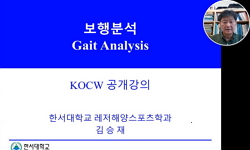Background: The flip-flop, popular for its light design and convenience, has practical advantages, but is unstable compared to closed shoes. This feature of the flip-flop causes a change in walking patterns. In previous studies, there are many studies...
http://chineseinput.net/에서 pinyin(병음)방식으로 중국어를 변환할 수 있습니다.
변환된 중국어를 복사하여 사용하시면 됩니다.
- 中文 을 입력하시려면 zhongwen을 입력하시고 space를누르시면됩니다.
- 北京 을 입력하시려면 beijing을 입력하시고 space를 누르시면 됩니다.

플립-플롭(Flip-flops) 보행이 건강한 성인의 시-공간적 변수와 발목 관절 움직임에 미치는 영향 = Effects of Wearing the Flip-flops on Spatio-temporal Gait Parameter and Ankle Motion in Healthy Young Individuals
한글로보기https://www.riss.kr/link?id=A108169346
- 저자
- 발행기관
- 학술지명
- 권호사항
-
발행연도
2022
-
작성언어
-
- 주제어
-
KDC
512
-
등재정보
KCI등재후보
-
자료형태
학술저널
-
수록면
8-14(7쪽)
- 제공처
-
0
상세조회 -
0
다운로드
부가정보
다국어 초록 (Multilingual Abstract)
Background: The flip-flop, popular for its light design and convenience, has practical advantages, but is unstable compared to closed shoes. This feature of the flip-flop causes a change in walking patterns. In previous studies, there are many studies on the kinetic and kinematic characteristics of flip-flop walking; however, there are various conclusions on the effect of flip-flop walking on temporal and spatial parameters, and ankle motion change during flip-flop walking.
Objectives: The purpose of this study was to investigate the effect of flip-flop walking on spatio-temporal variables and ankle motion compared to sneakers walking.
Methods: Twenty-one healthy subjects were participated. Xsens-DOT was used to track body movements. Steplab was used to analyze, visualize, and quantify tracked data. Participants were instructed to walk naturally in sneakers that fit their feet, and 50 steps were measured, five steps later for adaptation. In the same way, the measurement was performed wearing flip flops. The paired t-test was used to investigate the difference between sneakers walking and flip-flop gait. Statistical significance levels were set to α = 0.05.
Results: There was no statistically significant difference in walking speed and stride length in spatio- temporal parameter. However, compared to sneakers walking, the maximum toe distance during flip-flop walking decreased statistically significantly (p < 0.05). The ankle motion was significantly reduced in both toe off angle and heel contact angle during flip-flop walking (p < 0.05).
Conclusions: Walking wearing flip-flops increases the risk of falls and reduces push off capacity. Therefore, people who are fatal to falls and vulnerable to fatigue should not walk wearing flip-flops.
목차 (Table of Contents)
- Introduction
- Methods
- Results
- Discussion
- Conclusion
- Introduction
- Methods
- Results
- Discussion
- Conclusion
동일학술지(권/호) 다른 논문
-
낙상 예방을 위한 몸통 안정화 운동이 여성 노인의 균형 능력에 미치는 영향
- 한국임상움직임치료학회
- 하용목(Yong-Mok Ha)
- 2022
- KCI등재후보
-
- 한국임상움직임치료학회
- Eui-Ryong Kim(Eui-Ryong Kim)
- 2022
- KCI등재후보
-
장력계와 역량계를 이용한 엉덩이 조임 근력과 큰볼기근 근력의 상관관계
- 한국임상움직임치료학회
- 김동휘(Dong-Hwi Kim)
- 2022
- KCI등재후보
-
- 한국임상움직임치료학회
- Soo-Hyun Bae(Soo-Hyun Bae)
- 2022
- KCI등재후보




 스콜라
스콜라



